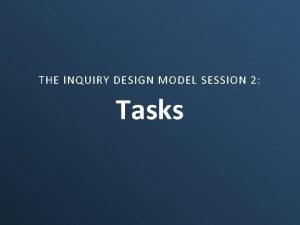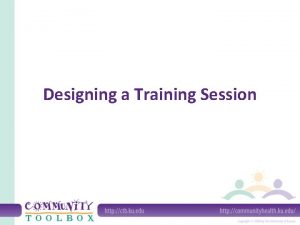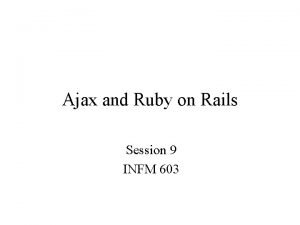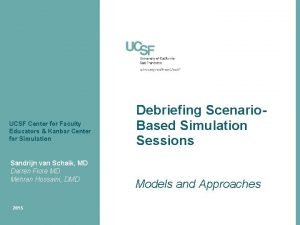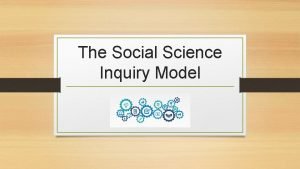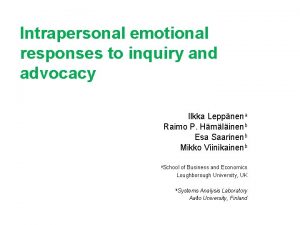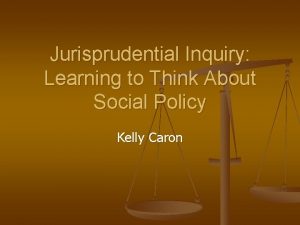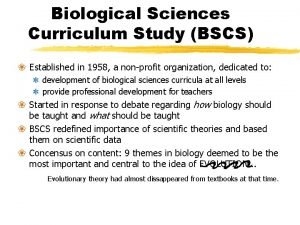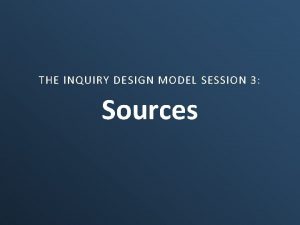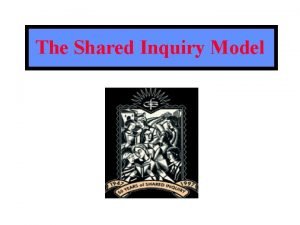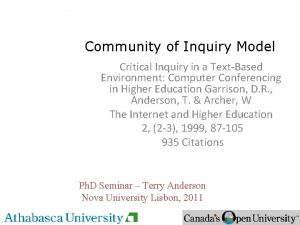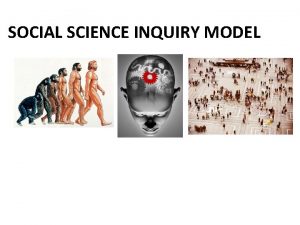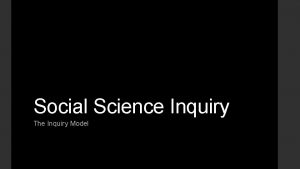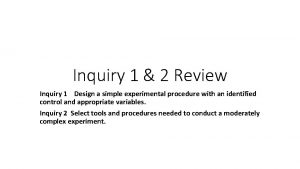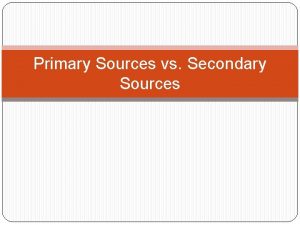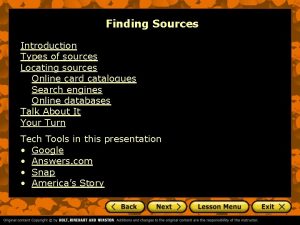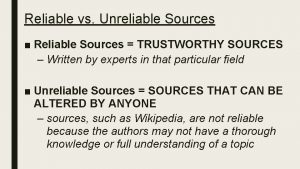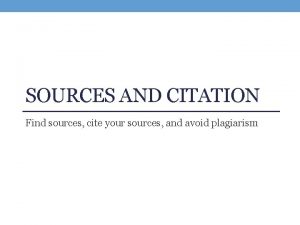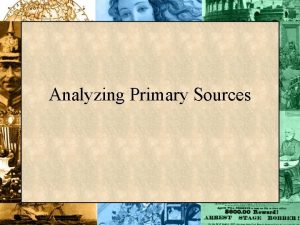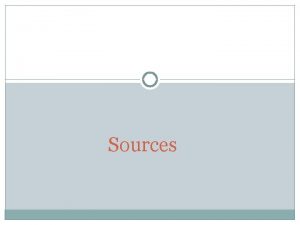THE INQUIRY DESIGN MODEL SESSION 3 Sources Part



























- Slides: 27

THE INQUIRY DESIGN MODEL SESSION 3: Sources

Part I – The Nature of Sources • What are sources? • What makes a source disciplinary? • What is the relationship between sources and tasks? • How do sources support work with knowledge and skills?

What Are Sources? • Sources provide information that is useful in answering questions • Three characteristics of sources – Information contained in a source – Composition of a source – Perspective or bias of a source

What Makes a Source Disciplinary? • Sources have features that are distinctive within the disciplines. • Examples of disciplinary sources and processes include: Political Science – legislation evaluating public policies Economics – data and statistics quantitative reasoning Geography – maps and GIS data spatial reasoning History – oral history and diaries perspective

Your Task Given the content suggested in Key Idea 7. 7 in NYS K– 12 Social Studies Framework, what are some sources that would be useful in an inquiry on the compelling question, “Can words lead to war? ” • • What sources in political science? What sources in economics? What sources in geography? What sources in history?

What is the relationship between sources and tasks? • IDM tasks are anchored by sources • Sources and tasks must work in tandem

Source Work Follows C 3 Inquiry Arc If students are asked a COMPELLING QUESTION… In the middle are the SUPPORTING QUESTIONS, FORMATIVE PERFORMANCE TASKS, AND SOURCES Students answer in the form of a SUMMATIVE ARGUMENT S O U R C E S

How do sources support work with knowledge and skills? • Disciplinary knowledge and disciplinary skills are integrated within an investigation. • Source work is not easy.

Part II – The Instructional Uses of Sources can be used to • Spark curiosity • Build knowledge • Construct arguments

Sparking Curiosity Sparking curiosity is about engagement • Focus on relevance and what we know students care about. • Use staging activities in an inquiry. • Nurture curiosity through sources throughout the inquiry.

How would you use this source to spark curiosity? http: //www. speaktruthvideo. com/2014 -winners. html Kailash Satyarthi

What are some other ways to spark curiosity using sources?

Building Knowledge • Sources in an inquiry contain the disciplinary knowledge (content and concepts) students need to complete tasks. • Students use disciplinary skills when building knowledge. • Students gather information from the sources during an inquiry.

How do the sources support the building of knowledge?

Constructing Arguments with Evidence • Inquiries result in arguments. • Sources contain information that can be used as evidence in an argument. • Students need support when determining what information should be used in an argument.

How do the sources support the argument?

Part III – Working with Sources When using sources in an inquiry teachers should consider the following: • Selecting sources • Scaffolding • Adapting sources

Selecting Sources Selection of sources requires deep knowledge of content • Where can we find the sources? – Archives, libraries, collections – Online – Through collaboration and sharing


Adapting Sources • Approaches to adapting sources – Excerpting – Modifying – Annotating • Examples – Text passage from Uncle Tom’s Cabin – Summary of Uncle Tom’s Cabin – Illustration from the first edition of Uncle Tom’s Cabin • Adaptations to instruction • Objections to making changes to sources

Sources Require Scaffolding • Scaffolds provide novices with support for complex academic work. • Toolkit scaffolds were designed to support formative and summative tasks. • Analyzing sources in an inquiry involves literacy work. • Again, source work is not easy.



Summary • Sources contain information useful in answering questions, are disciplinary in nature, relate to the tasks in an inquiry, and support work with knowledge and skills. • IDM features three instructional uses of sources: – Sparking curiosity – Building knowledge – Constructing arguments with evidence • When using sources in an inquiry teachers should consider the following: – Selecting sources – Adapting sources – Scaffolding

IDM™ Conceptual Framework: Sources • Content knowledge and disciplinary skills are integrated within an investigation (#3) • Disciplinary sources are the building blocks of inquiry (#6) • Social studies shares in the responsibility for literacy (#8)

Questions Tasks Sources

Pulling it All Together
 Print sources of information
Print sources of information Water resource
Water resource Inquiry design model example
Inquiry design model example Training session design
Training session design Microsoft technology centre
Microsoft technology centre Rails session model
Rails session model Ucsf kanbar center
Ucsf kanbar center Social enquiry model
Social enquiry model Advocacy inquiry model
Advocacy inquiry model Big6 model
Big6 model Jurisprudential inquiry model bed notes
Jurisprudential inquiry model bed notes Biological science curriculum study
Biological science curriculum study Model based inquiry
Model based inquiry Hát kết hợp bộ gõ cơ thể
Hát kết hợp bộ gõ cơ thể Bổ thể
Bổ thể Tỉ lệ cơ thể trẻ em
Tỉ lệ cơ thể trẻ em Voi kéo gỗ như thế nào
Voi kéo gỗ như thế nào Thang điểm glasgow
Thang điểm glasgow Chúa yêu trần thế alleluia
Chúa yêu trần thế alleluia Các môn thể thao bắt đầu bằng từ đua
Các môn thể thao bắt đầu bằng từ đua Thế nào là hệ số cao nhất
Thế nào là hệ số cao nhất Các châu lục và đại dương trên thế giới
Các châu lục và đại dương trên thế giới Công thức tính thế năng
Công thức tính thế năng Trời xanh đây là của chúng ta thể thơ
Trời xanh đây là của chúng ta thể thơ Cách giải mật thư tọa độ
Cách giải mật thư tọa độ Làm thế nào để 102-1=99
Làm thế nào để 102-1=99 Phản ứng thế ankan
Phản ứng thế ankan


